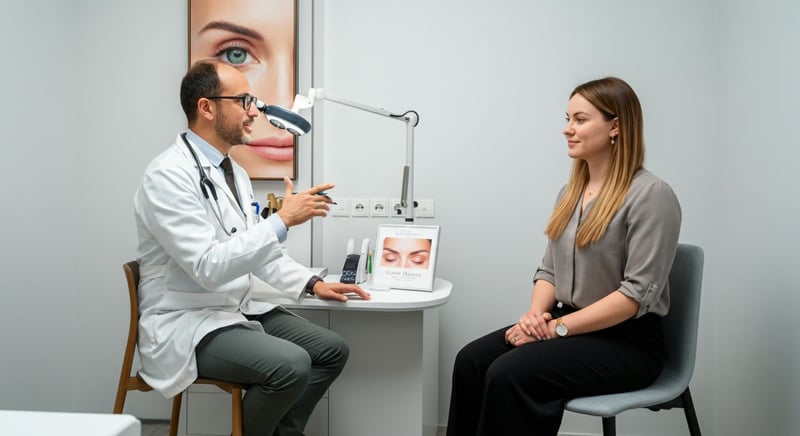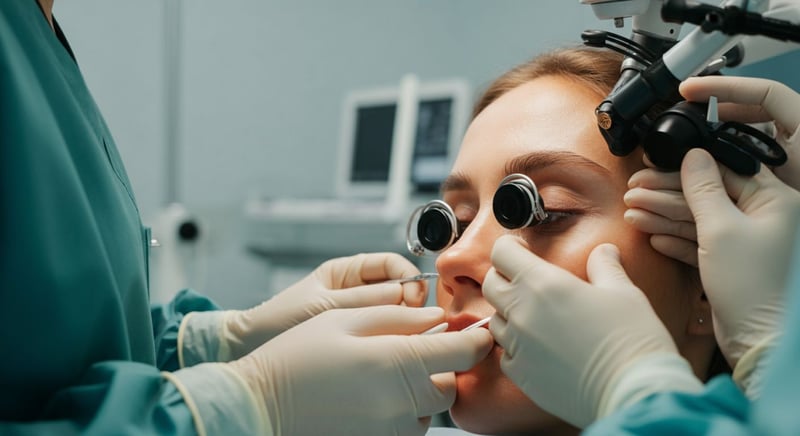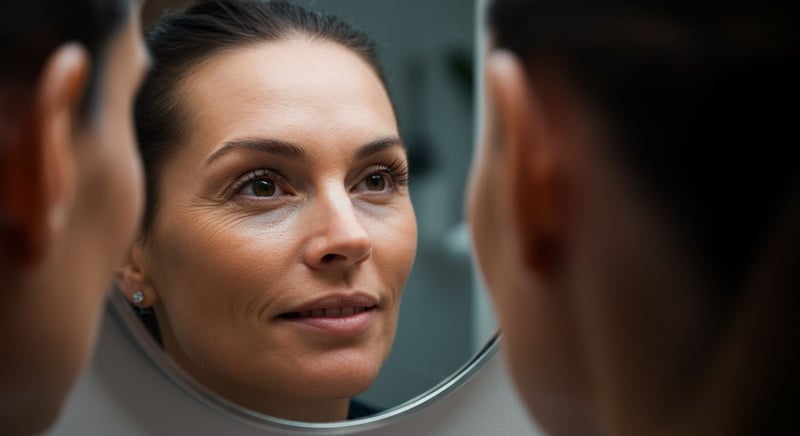Blepharoplasty Unveiled: Renew Your Eyes, Restore Your Vision
Discover the transformative benefits of blepharoplasty and unveil a refreshed, youthful appearance while enhancing your vision and comfort.
Blepharoplasty, commonly referred to as an eyelid lift, is not just a cosmetic procedure but a transformative experience. Whether you are seeking to address sagging upper eyelids, under-eye bags, or vision impairments caused by excess skin, understanding this surgical procedure can enhance both your appearance and your quality of life. In this comprehensive guide, we unravel the intricacies of blepharoplasty, differentiating between upper and lower eyelid surgeries, detailing the patient journey from consultation to recovery, and highlighting the surprising benefits beyond aesthetics.
Understanding Blepharoplasty: More Than Just an Eyelid Lift
Exploring the Multifaceted Benefits of Blepharoplasty
Blepharoplasty offers a transformative approach, far beyond simple cosmetic enhancements to the eye area. This sophisticated surgical procedure addresses concerns like excess skin and fat deposits which are removed to correct vision impairments caused by drooping eyelids. Many patients experience a significant boost in their self-esteem as their eyes reflect a more rested look. Blepharoplasty thus serves a dual purpose, enhancing both aesthetics and functionality for those seeking eye rejuvenation.
Key Improvements Through Blepharoplasty
- Improved Vision: Corrects vision obstructed by sagging eyelids, enhancing the field of view.
- Enhanced Appearance: Reduces puffiness and wrinkles around the eyes, providing a youthful and refreshed look, essential for cosmetic surgery eyes.
- Increased Comfort: Alleviates discomfort caused by heavy eyelids, improving overall eye comfort.
The desire for blepharoplasty often stems from the combined need for physical relief and aesthetic refinement. In particular, ptosis repair which often accompanies upper eyelid surgery can greatly improve patients' vision and comfort. During recovery from eyelid surgery, it is important to avoid straining the eyes to allow full healing.
Understanding the Blepharoplasty Procedure
- Initial Assessment: A thorough consultation to determine the patient's specific needs and suitability for the procedure.
- Strategic Incisions: Precisely placed incisions to remove excess skin and fat, minimizing visible scarring.
- Careful Closure: Meticulous closure of incisions to ensure optimal healing and aesthetic outcome.
The success of blepharoplasty relies on the surgeon's expertise in tailoring the procedure to meet individual needs, ensuring natural-looking results that enhance overall facial harmony. As a bonus, some patients also consider blepharoplasty or brow lift options to tackle other aging issues.

Upper vs. Lower Eyelid Surgery: Tailoring the Procedure to Your Needs
How to Determine the Right Blepharoplasty Approach for You
Deciding between upper or lower eyelid surgery requires identifying specific cosmetic or functional concerns. Upper eyelid surgery often addresses sagging skin that impairs vision by lifting and firming up the upper eyelid area. Conversely, lower eyelid blepharoplasty targets the reduction of under-eye bags and smoothing wrinkles, rejuvenating the area beneath the eyes. Both procedures may be performed together to enhance the overall facial appearance. Consulting with a qualified surgeon is crucial to assess individual needs and determine the most appropriate surgical plan. For instance, if the primary concern is vision impairment due to heavy lids, upper eyelid surgery may be the more suitable option.
Key Considerations for Eyelid Surgery
- Functional Needs: Evaluate if drooping eyelids affect vision, which may indicate upper eyelid surgery.
- Cosmetic Goals: Determine if the focus is on reducing bags under the eyes or smoothing wrinkles, pointing towards lower blepharoplasty.
- Overall Facial Harmony: Consider how each procedure contributes to a balanced facial aesthetic, possibly requiring both upper and lower eyelid surgeries.
Understanding personal aesthetic goals is essential when considering eyelid surgery. Patients should thoroughly discuss their expectations with their surgeon, allowing for a tailored approach that aligns with their vision for eyelid rejuvenation.
Preparing for Your Eyelid Surgery Journey
- Initial Consultation: Discuss your concerns and desired outcomes with a board-certified plastic surgeon to assess suitability for surgery.
- Pre-operative Assessment: Undergo a thorough medical evaluation to ensure you are a good candidate for the procedure and to identify any potential risks.
- Customized Surgical Plan: Develop a detailed surgical plan with your surgeon that addresses your specific needs, whether it involves upper, lower, or both eyelid surgeries.
Preparing adequately for eyelid surgery involves carefully considering your surgeon's advice and adhering to all pre-operative guidelines to ensure the best possible outcome.

The Eye Lift Journey: From Consultation to Radiant Results
Navigating Your Blepharoplasty Experience
Embarking on eyelid surgery involves several well-defined stages, aimed at ensuring patient comfort and optimal results. Initially, a comprehensive consultation is critical to determine the patient’s goals and assess their suitability for the procedure. This is followed by detailed pre-operative guidelines, including adjustments to medications and lifestyle habits, to minimize risks and enhance recovery. The surgery itself is performed with precision, under either local or general anesthesia, depending on the extent of the procedure and patient preference. Post-operatively, patients receive tailored care instructions to promote healing and are closely monitored to ensure satisfaction with the aesthetic outcome. The entire journey is designed to be supportive and informative, helping patients achieve refreshed and rejuvenated eyes.
Key Aspects of the Eyelid Surgery Journey
- Personalized Consultation: Tailored to each patient's unique needs and expectations to ensure alignment with achievable results.
- Comprehensive Preparation: Detailed guidance on pre-operative care to optimize safety and effectiveness of the surgery.
- Dedicated Post-operative Support: Continuous monitoring and customized care instructions to facilitate smooth healing and satisfaction.
The journey of eyelid surgery is structured to prioritize the patient’s well-being, from the initial consultation through the complete recovery process. It underscores the need for clear communication between the patient and surgeon to ensure all expectations are realistically met.
Göz kapağı estetiğini etkileyen faktörleri anlamak.- Initial Assessment: A detailed evaluation of eyelid condition and patient expectations with advanced imaging may be required.
- Surgical Technique: The process used which may include removal of excess skin, fat repositioning, and muscle tightening.
- Recovery and Aftercare: Advice for post-operative care to ensure optimal healing and lasting outcomes.
Understanding factors that can have effects on blepharoplasty requires a collaborative approach between the surgeon and patient, which ensures that the surgical plan meets and aligns with the patient’s desires. It is important to follow the surgeon's advice, as this ensures a smooth surgical procedure, and a satisfying surgical result.

Beyond Aesthetics: How Blepharoplasty Can Improve Vision and Comfort
Functional Benefits of Eyelid Surgery Beyond Cosmetic Improvements
While many view blepharoplasty as primarily a cosmetic surgery, its functional benefits are profound. Excess skin on the upper eyelids can obstruct the field of vision, leading to difficulties in performing daily activities. Patients opting for eyelid surgery often experience a significant improvement in their visual range. This enhanced vision also reduces strain and fatigue associated with constantly trying to compensate for impaired sight. Blepharoplasty can improve vision for those whose sight is affected and offer more comfort and ease in daily life.
Primary Functional Benefits of Blepharoplasty
- Expanded Visual Field: Removal of excess eyelid skin provides a clearer, wider range of vision.
- Reduced Eye Strain: Eyes no longer work harder to see past obstructions, decreasing fatigue.
- Alleviated Discomfort: Lighter eyelids diminish the sensation of heaviness and pressure around the eyes.
Blepharoplasty offers more than just aesthetic improvements; it restores functionality crucial for daily living, promoting better quality of life. When looking to have cosmetic surgery eyes it is important to consider a long-term vision plan. The skills used in ptosis repair can greatly improve a patient's comfort in the long run.
Steps to Assess Functional Needs for Blepharoplasty
- Comprehensive Eye Exam: A detailed assessment to measure the degree of visual impairment caused by drooping eyelids.
- Consultation with a Specialist: Discussion with a surgeon to understand how blepharoplasty can address specific functional concerns.
- Pre-operative Simulation: Visualizing potential improvements in field of vision post-surgery to align expectations with possible outcomes.
Assessing functional needs requires a combined approach of medical evaluation and specialist consultation to tailor blepharoplasty to individual health requirements, ensuring optimal visual enhancement and a higher quality of life. The benefit from blepharoplasty or brow lift might be the solution for problems such as drooping eye lids.
Precision Blepharoplasty: Tailored Surgical Techniques for Enhanced Vision and Aesthetic Refinement
Patient-Centric Blepharoplasty: From Comprehensive Consultation to Satisfying Results
Frequently Asked Questions
What is blepharoplasty and what does it address?
What are the key differences between upper and lower eyelid surgery?
How can blepharoplasty improve vision and comfort beyond aesthetic improvements?
What is the typical recovery like after upper eyelid surgery?
What factors are considered during the blepharoplasty consultation process?
Ready to discover your aesthetic potential with award-winning care?
📞 Call Today for Expert Advice!